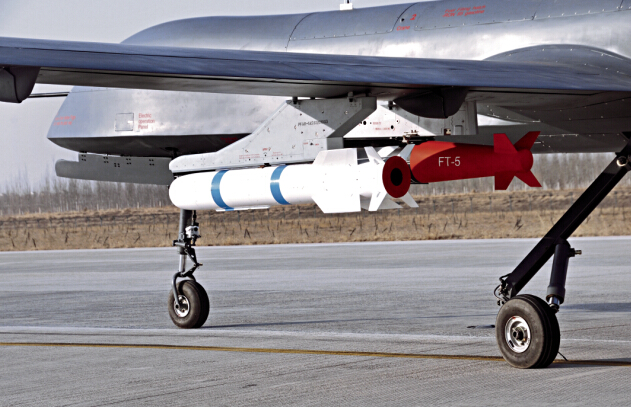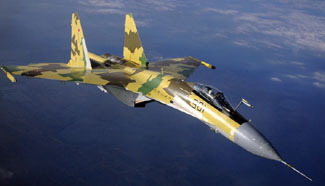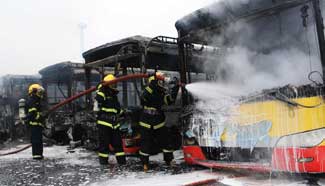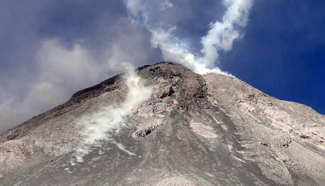
Six targets for one mission
Being affordable doesn’t mean poor combat capabilities. The design of the CH-4 has enhanced its payload and endurance indicators. It has a maximum endurance time of 40 hours and can carry a payload of up to 345 kilograms.
So what’s the secret behind this?
The CH-4 was designed at the China Academy of Aerospace Aerodynamics. The innovations include high lift-to-drag ratio aerodynamic design, large aspect ratio wing aero-elasticity, and stability-affecting horizontal vortex separation caused by specially designed nose cones and other features, making its aerodynamic design world class. For instance, the CH-4’s lift-to-drag ratio, which is key to a drone’s endurance, is more than 20 and its cruise lift coefficient is nearly 1.0. Coupled with an enhanced constant speed variable pitch propeller, its cruise fuel consumption is low and take-off power is impressive.
So how many weapons can a 345-kilogram payload carry? Beneath the wings of the CH-4 are four hardpoints for four missiles or bombs. With its maximum payload, the two inner side hardpoints can carry two missiles respectively if equipped with racks, which means the CH-4 can hit six targets on one mission. Missiles weighing 15 to 20 kilograms are currently in development, and these would enable it to carry up to 10 missiles.
Functional at 5,000 meters
Moreover, “sustainable losses” doesn't mean it is easily lost.
Among the CH-4 indicators is one figure that puts it ahead of most of its peers -- a cruising altitude of 5,000 meters. Its main ammunition AR-1 missiles can be launched from an altitude of 5,000 meters, which means the CH-4 can hit a target from an altitude of 5,000 meters.
Let’s take a look at another set of figures: the maximum firing height of the 35mm Oerlikon cannon is 3,000 meters; the effective firing height of a Stinger personal portable missile is 3,000 meters; the Rapier surface-to-air missile 3,000 meters; the effective firing height of France-made “Rattlesnake” surface-to-air missile is 3,500 meters. That means air defense weapons for ground forces below regiment level pose no threat to the CH-4. Terrorists, having little air defense firepower, will be unable to fight back.
But hitting a target from a cruising altitude of 5,000 meters still depends on payload capabilities, which the CH-4 has. It has two reconnaissance payloads, including the Opto-Electronic Platform, which features visible lighting, infrared, laser rangefinder and laser designator. It can detect a medium-sized tank 15 kilometers away and conduct all-time reconnaissance on targets. The CH-4 also boasts a synthetic aperture radar to see through the clouds with a maximum recon-range of 50 kilometers and a maximum resolution of half a meter, which can help it detect commonly seen targets on the battlefield.
Therefore, the UAS of the CH-4, coupled with its reconnaissance, attack and payload system, successfully make a combat UAV at an altitude of 5,000 meters. These capabilities greatly enhance its odds of survival in combat and make it an efficient attack vehicle. Normally, long-endurance UAVs descend at a velocity of no more than 10 meters per second because of their special aerodynamic design. That means it will take a UAV more than three minutes to descend from 5,000 to 3,000 meters, which leaves the target ample time to flee or to find cover. Engaging a target from 5,000 meters leaves no possibility of escape.
Market tested
In today’s UAV market, drones emerge like bamboo shoots after the rain, so how can a buyer choose wisely? Aside from price, performance and after-sale service, buyers should also consider whether the developers have solid research and development capabilities and whether the products have been tested in actual combat conditions -- these are all essential.
The China Academy of Aerospace Aerodynamics has developed and put into production several UAV models. These include the CH-802, a micro aerial vehicle (MAV), which showed its advantages in search and rescue after the earthquake in Ya’an city, Sichuan. It was convenient, highly reliable and had accurate positioning capabilities. It has become a world-leading MAV model. The CH-1A was developed for maritime surveying and mapping. It boasts a centimeter-grade aerial positioning ability, outboard foldable parking and net recovery and is highly adaptable. Put into production in 2007, the CH-3A reconnaissance and combat drone is China’s biggest selling drone abroad and has the most use in combat conditions. It is durable, with strong low-altitude defense penetration abilities and is good at mapping, exploration and night flight. A new CH series drone, which is still in development and has completed its maiden flight, has twice the takeoff weight of the CH-4. Under normal circumstances, it can carry eight 50-kilogram-grade missiles, 16 in emergency situations. It also beats the CH-4 in other indicators, especially in electronic jamming.
The CH series drones have become a competitive brand developed and produced in China, and more clients from home and abroad are employing them for diverse military and civil roles.
Other references:
AR-1 missile: a UAV missile equipped with a semi-active laser guided system, specifically designed by the China Academy of Aerospace Aerodynamics for UAVs. It is 1.45 meters long, has a diameter of 180 millimeters and weighs 45 kilograms. It can be launched at an altitude of 5,000 meters and can penetrate armored targets within 1 meter. It has a hit rate of more than 90 percent for targets with a speed of less than 70 kilometers per hour. The warhead has a declined structure, which allows it to laser capture a target 8 kilometers away horizontally. It also has an off-axis angle with a variance of plus or minus 20 degrees, all of which have enhanced its attack range and accuracy. In its latest firing practice, its miss distance was only 0.2 meters while the miss distance for a moving target vehicle is less than 1 meter.
FT-9 bomb: a satellite guided bomb, 152 centimeters long, 180 centimeters in diameter, weighing 50 kilograms. It has a hit accuracy within 15 meters within a 5-kilometer range. Its accuracy is almost 100 percent on fixed targets such as bridges and buildings or for effective strengths in large areas.

















